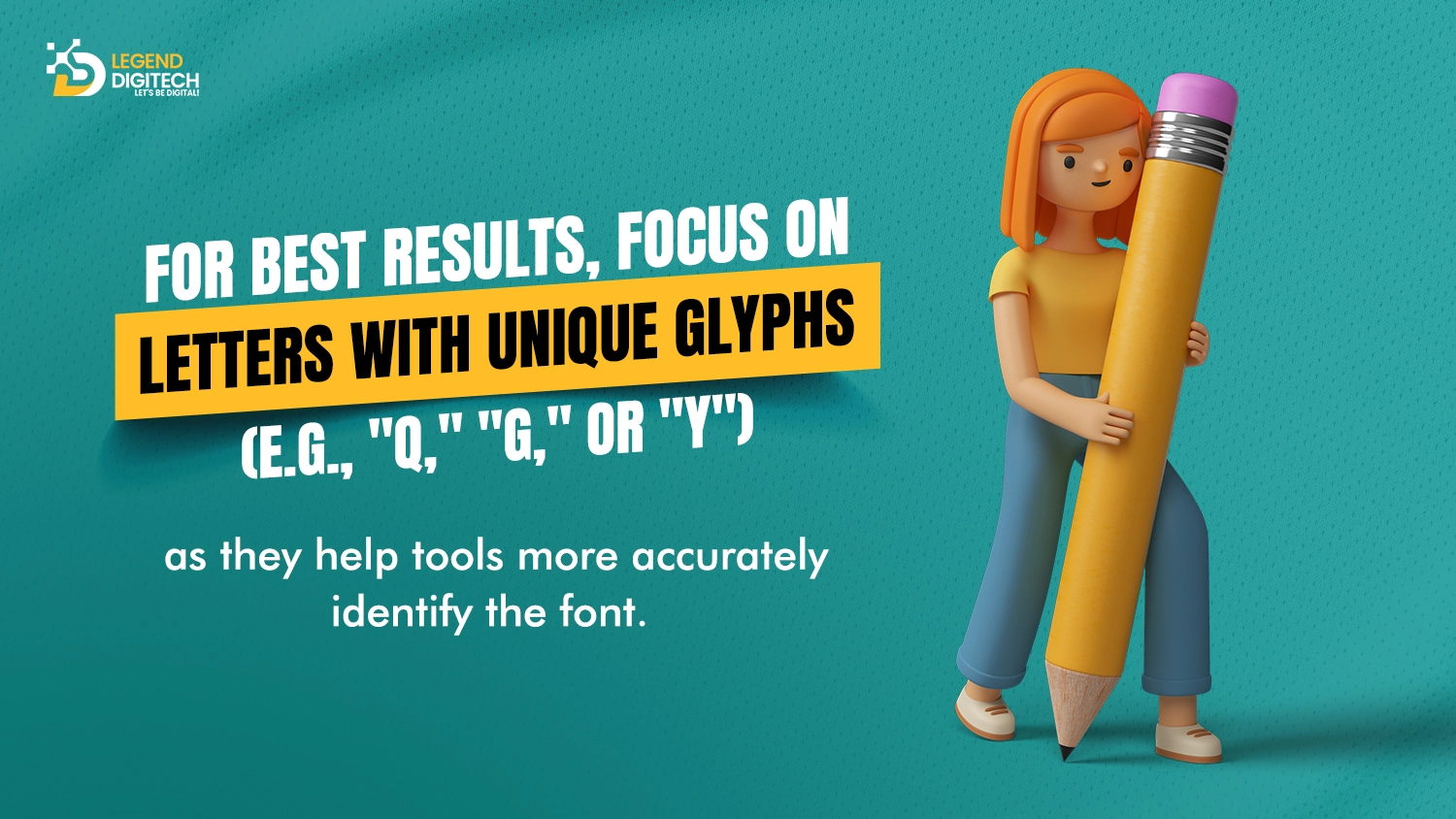Contents
Fonts are the cornerstone of typography, the art and technique of arranging type to make written language legible, readable, and visually appealing. From personal projects to professional branding, knowing how to identify a font is a must-have skill for anyone working in design or communications.
Even if you are not a designer, it’s just satisfying to figure out different font styles to enhance your typography skills. This guide will walk you through the best methods and tools to identify the font you are looking at right now.
Why Font Matters
The right font can make or break your design, impacting everything from brand identity to readability in both digital and print media.
In today’s fast-paced world, picking the right font is super important to grab people’s attention. If a typeface is too fancy or difficult to read, it can hide the message and make people lose interest.
The font does more than just share information; it also sets the mood and communicates feelings. For example, a clean sans serif font feels modern, while a classic serif font gives off a traditional vibe. This connection between how we write and what we say really helps people remember the information and hooks their attention.
Top Tools for Identifying Fonts
We recommend the following tools as they are proven to pinpoint fonts quickly and accurately:
- WhatTheFont: Upload images to identify fonts from an extensive database.
- Font Ninja: A browser extension for identifying fonts on websites.
- Font Squirrel Matcherator: Perfect for analyzing glyphs and typefaces.
- Identifont: Uses detailed questions to narrow down options.
- Photoshop: Extract text as an image, then analyze it with OCR or font tools.
How to Identify a Font in Print

Have you come across a striking font in a book, magazine, or flyer? Identifying it is easy with the right tools. First, take a clear photo of the text, make sure it’s well-lit and free of distortions. Next, upload the image to tools like WhatTheFont or Font Squirrel Matcherator to analyze the text and find matching fonts. Alternatively, you can consult font-identification forums or communities like Reddit’s r/identifythisfont for expert advice. If all else fails, many printing shops or typography professionals can help pinpoint the font. With patience and the right tools, any font mystery can be solved!
How to Identify a Font from an Image
Spotted a stunning font in an image and want to use it for your project? No problem!
WhatTheFont and Font Squirrel Matcherator let you upload an image to analyze the text and suggest font matches. These tools work best with formats like PNG or JPG. For the best results, crop the image to focus solely on the text, so that it’s clear and free of distortions. If the font isn’t a perfect match, these tools often suggest similar alternatives, giving you plenty of options to choose from. It’s quick, effective, and a game-changer for designers!
How to Identify a Font on a Website
Identifying a font on a website is easy with the right tools and techniques. Browser extensions like WhatFont or Font Ninja work seamlessly on Google Chrome, Firefox, and Safari, allowing you to hover over text to reveal font details such as typefaces, size, and weight. Alternatively, use the browser’s Inspect Element feature (right-click the text and select Inspect). Look for the font-family property under the Styles tab. Ensure ad blockers are disabled, as they might interfere with webfont detection. For sites using obscure fonts, screenshot the text and upload it to a font identifier tool for further analysis.
How to Identify a Font in a PDF
PDFs often contain embedded fonts, making identification straightforward. If you have access to Adobe Acrobat, open the PDF and go to File > Properties > Fonts. This reveals a list of fonts used, including details about their typefaces (e.g., OpenType, Sans Serif).
For PDFs without embedded fonts, use Optical Character Recognition (OCR) tools to extract text as an image. Then, upload the image to a font identifier tool like WhatTheFont. Another option is to import the PDF into Photoshop or an image editing app, crop the relevant section, and analyze the font. This gives greater accuracy when dealing with stylized glyphs.
How to Identify a Font in Canva
Canva offers a variety of fonts, but identifying a specific one requires a bit of effort. Highlight the text in your Canva design, and the font name will appear in the top toolbar. If the font isn’t a Canva native, take a screenshot, crop it to focus on the text, and upload it to tools like WhatTheFont or Font Ninja. Canva users can also explore their font library for similar typefaces to match their design needs.
Pro Tips for Accurate Font Identification
To ensure accuracy when identifying fonts, follow these tips:
- Upload Clear Images: Avoid scans or screenshots with blurs or distortions.
- Crop Text Precisely: Focus on a single line or word for better results.
- Use OCR Tools: For PDF fonts or complex glyphs, Optical Character Recognition improves detection.
- Match Style Variants: Pay attention to styles or small caps variations.
- Check Alternatives: Tools like Quora or Reddit forums can offer expert suggestions if tools fail.
Upscale Your Designs with Legend Digitech
Knowing how to identify a font and find the perfect one is just the start—what really makes a design shine is how everything comes together. At Legend Digitech, we’re all about turning your ideas into visuals that WOW! From sleek website designs, scroll-stopping social media posts, or typography that speaks volumes, we’ve got the tools and expertise to make it happen.
So, why settle for ordinary? Let’s work together to create designs that truly make an impact. Reach out—we’d love to chat!
